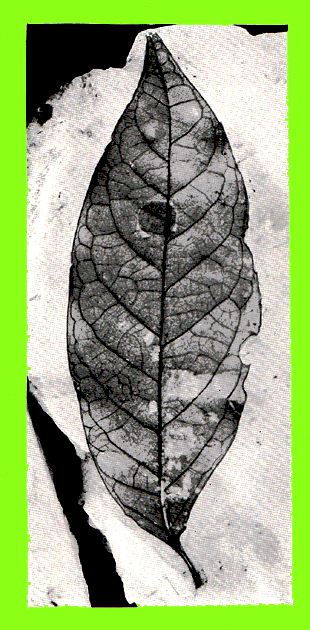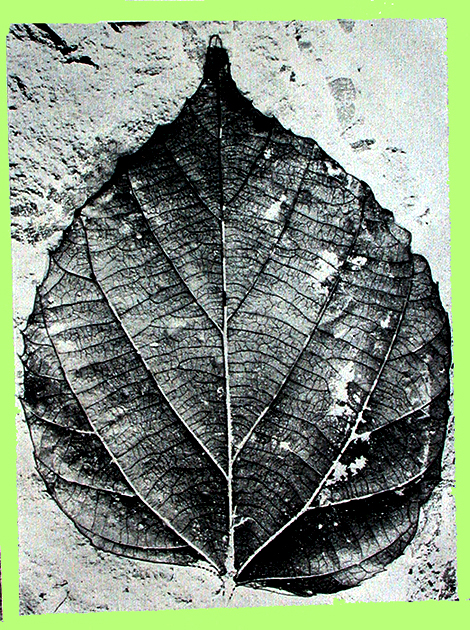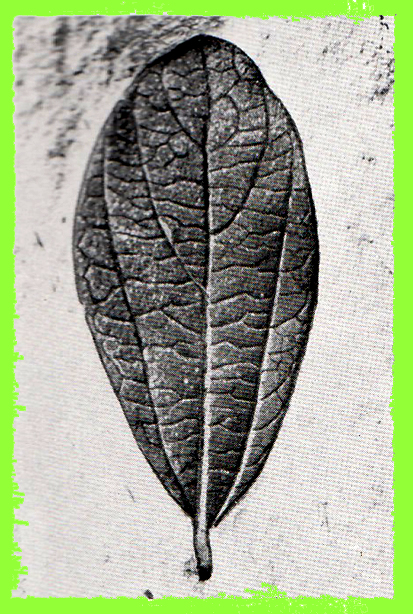



|
Top to bottom--Fossil leaves from the upper Eocene La Porte Tuff, secured from an abandoned hydraulic gold mine in the vicinity of La Porte, Sierra Nevada, California. Top--Laurophyllum ramiferivum: A member of the laurel family. This is what paleobotanist Susan S. Potbury called the Eocene equivalent of an unspecified member of the genus Ocotea; today the 300-some species of Ocotea are native primarily to the Caribbean, West Indies, tropical and subtropical areas of Africa, Madagascar, and the Mascarene Islands. Middle--Phyllites alchorneopsis--A form genus-species of uncertain botanic affinity (Incertae sedis). It shows closest affinity to two modern members of the genus Alchornea--Alchornea trewiodes of southern China (notably in Guangxi) and north Vietnam and Alchornea davidii of southern China. Bottom--Cinnamonum dilleri--The Eocene counterpart of the extant Cinnamonum penduculatum--commonly known as Japanese cinnamon, an evergreen tree that grows to roughly 49 feet; presently native to Japan, Korea, Taiwan, and eastern China. Photographs courtesy Susan S. Potbury, from her publication The La Porte Flora Of Plumas County, California, originally issued November 25, 1935; contained in Carnegie Institute of Washington Publication 465, 1937, Eocene Flora Of Western America. I edited and processed the images through photoshop; adding the green border, for one. Note--Always check with the US Forest Service to determine if unauthorized fossil collecting is allowed at the La Porte locality. |